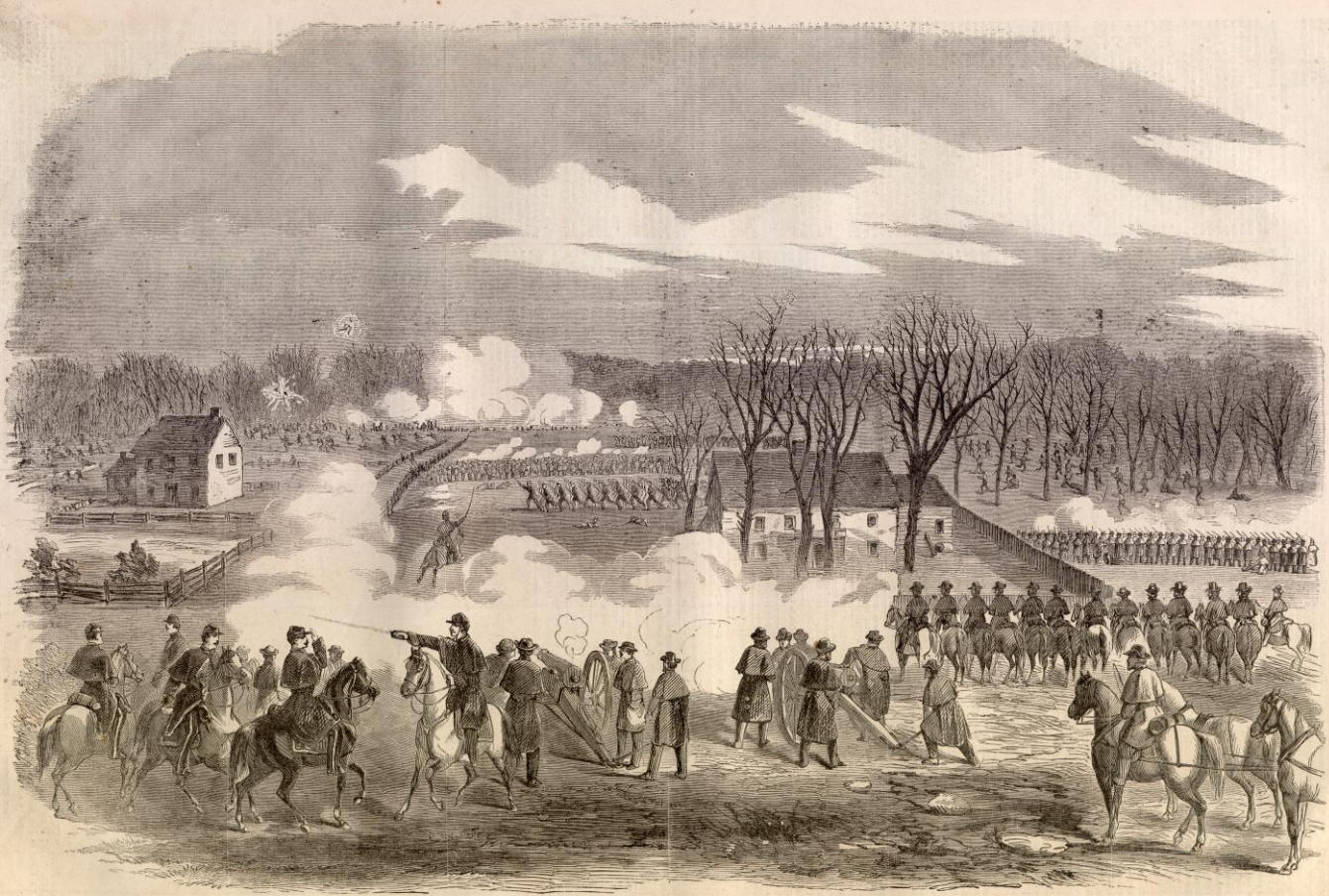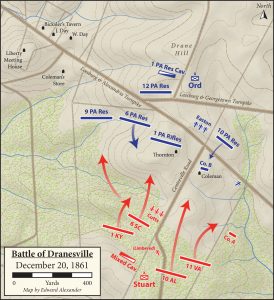A Life Ended, A Life Remembered
Today is the 162nd anniversary of the battle of Dranesville, fought in Fairfax County, Virginia.
I’ve written about the battle consistently for ECW over the years, and my book about the battle will be published in 2024 through Savas Beatie. It was a battle that did not alter the war or offer any turning points, but nonetheless impacted its participants in deeply personal ways. Over the last few years, I’ve sought to tell as many stories of the soldiers who fought and died on Dec. 20, 1861. So tonight, as a quick read, I offer a few thoughts on one of the battle’s fatalities, George Cook, and how Cook’s comrades remembered him for years afterwards.
Born around 1841, census takers found George Cook living in Philadelphia by 1860. He listed his profession as “sash maker,” but little else is known about his personal life before the Civil War. When conflict did come, he enlisted in Company E, 13th Pennsylvania Reserves (also known as the Bucktails). The army noted he was 5’4”, with brown hair, black eyes, and a dark complexion.
Amidst the larger Pennsylvania Volunteer Reserve Corps, the Bucktails marched into Virginia and took up positions at Camp Pierpont, nearly Langley, Virginia, in early October 1861. They were barely 10 miles away from Dranesville, and routine patrols scouted the area. On Dec. 20, the Bucktails were ordered to accompany a larger Federal excursion to Dranesville under the command of Brig. Gen. Edward Ord, who was instructed to secure the safety of local unionists as well as collect wagon loads of supplies in the area.
As the Union soldiers set out from Camp Pierpont, George Cook was not initially with them. He was instead on guard duty, but loathe to miss the action. As one of his comrades wrote, Cook was “was anxious to be along with the regiment, and hired another man to do duty for him in his absence.”[1]
Ord’s Pennsylvanians were in high spirits as they marched west towards Dranesville, even singing they would hang Jeff Davis from a sour apple tree and laughing as they went. The Bucktails went ahead of the main column, acting as skirmishers as they closed in on the town.
Nearing Dranesville, Company E moved into the woods south of Dranesville alongside Company A of the 9th Pennsylvania Reserves. Together the two companies took up positions amidst pine trees, but did not have long to wait until Confederates closed on them. The battle of Dranesville began as an accidental meeting engagement—neither side really expected the other to be there. A scattering of musketry and rifle cracks marked the beginning of the battle that would eventually last about two hours.

George Cook, the man who wasn’t even supposed to be there, died in the opening shots, “shot through the head, almost at the first fire.”[2] It’s not clear what happened with his remains; were they brought back to Pennsylvania (I’ve found no evidence of that), or perhaps buried in an unknown grave in what eventually became the Soldiers’ and Airmen’s Home National Cemetery (other fatalities from Dranesville were interred there, so it’s a possibility).
While I don’t know where Cook was buried, I do know his comrades never forgot him. Even after the Bucktails became one of the most famous units of the entire Army of the Potomac, fighting just about everywhere, they never forgot Cook. In 1872, Cook’s former company commander, Capt. Alanson Niles (himself wounded at Dranesville) became the first post commander of the George Cook Post of the Grand Army of the Republic (G.A.R.)
The G.A.R. became the fraternal organization for former Union veterans of the war. By 1882, the George Cook Post was in Wellsboro, Pennsylvania, in an old Baptist Church. The post members met annually to remember, and to decorate the graves of their fallen during Memorial Days. With the passage of time, veterans died and memories faded, but until the very end, George Cook and the battle of Dranesville stayed with them.
[1] Wallace M. Moore to William O. Bourne, Apr. 27, 1868, William O. Bourne Papers, 2nd ser., no. 114, Library of Congress.
[2] Ibid.

Well done article. Individuals matter.
Agree with Shannon. Great article on George Cook’s untimely demise in the war of rebellion and how his memory lived on through his comrades over the years to come.